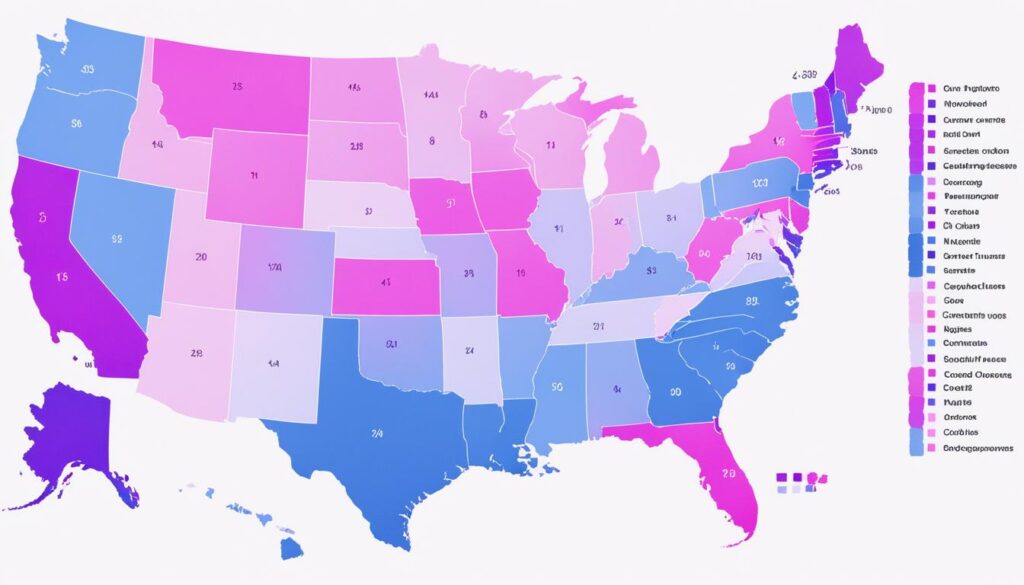Imagine the scenario: you’re confined to a hospital bed, post-surgical. The cacophony of medical devices fills the room, exacerbating your sense of fragility. Amidst this, a soothing voice penetrates the medical symphony, offering reassurance. It’s a male nurse, his presence providing solace in this critical moment.
Nursing has historically been a bastion for women. However, the integration of men into this profession holds pivotal importance. This shift is crucial not only for the diversity it brings but also for the quality of care it promises to patients, shattering conventional norms.
Key Takeaways:
- Increasing male representation in nursing enhances patient care and promotes gender diversity in healthcare.
- Stereotypes and societal opinions have contributed to the gender imbalance in nursing.
- Breaking down barriers and encouraging more men to pursue nursing careers is crucial for a balanced and diverse nursing workforce.
- Male nurses have played significant roles in nursing throughout history.
The Ratio of Male to Female Nurses and the Gender Pay Gap
Recent data from the United States Census underscores an extensive gender discrepancy within the nursing field. Prevalent disparities are observed between male and female nursing professionals, prompting the necessity of gender gap mitigation through the bolstering of male nurse representation. Variance is notable across states, notably in Iowa, Nebraska, and Vermont, where the male-to-female nurse ratio markedly differs.
Below you will find a table illustrating the gender distribution among nurses in various states:
| State | Male-to-Female Ratio |
|---|---|
| Iowa | 1:19 |
| Nebraska | 1:18 |
| Vermont | 1:17 |
| … | … |
This illumination underscores the exigency of enhancing the participation of males in nursing to achieve equitable gender representation.
Furthermore, scrutiny of mean annual earnings between genders within nursing underscores an alarming gender pay gap. Females within the profession are disfavored, earning significantly lower than their male counterparts—discrepancies reaching as high as $19,191 annually, dependent on the nurse’s specific designation.
The subsequent delineation outlines the extent of salary disparity, contingent on varying nursing roles:
| Nursing Role | Gender Pay Gap |
|---|---|
| Registered Nurse | $6,275 |
| Nurse Practitioner | $12,150 |
| Certified Nurse Midwife | $19,191 |
| … | … |
Emphasizing the eradication of the gender wage gap and facilitating equal professional standing for both male and female nurses is pivotal for an inclusive nursing environment.
To deepen comprehension regarding the ramifications of gender distribution and remuneration discrepancies within nursing, an anecdote from a firsthand observer underscores challenges:
“My nursing career has been shadowed by systemic gender disparities. The insufficient male representation and remuneration inequities have profound repercussions, challenging the foundation of our profession. Addressing the wage gap is integral for the ethical practice and advancement of nursing as a whole.” – John Smith, Registered Nurse

A proactive stance against imbalanced gender distributions and wage disparagements is imperative. By fortifying gender equality and advocating for salary parity, we pave the way for a synergistic, diverse, and fair nursing cadre, benefiting both practitioners and the patient community.
Increasing Male Representation in Nursing and Breaking Stereotypes
To fight the gender gap in nursing, our efforts focus on bolstering male presence. Notably, Marquette University’s Direct Entry MSN program has heightened the male-female ratio. This underscores an escalating trend wherein males are drawn to nursing, recognizing the intrinsic value and professional avenues it offers.
The presentation of a nursing career’s benefits is instrumental in engaging more men. Beyond financial allure, nursing offers boundless career paths, geographical mobility, and intellectual growth. By accentuating these aspects, we aim to dispel any myths regarding men in nursing, offering them a compelling vocational choice.
Central to our endeavor is the eradication of stereotypes surrounding male nurses. Utilizing male nurses as beacons, we aspire to cultivate aspirations among young males, thus dismantling antiquated career perceptions. Our initiatives encompass education and community engagement, seeking to not only ameliorate the nursing deficit but also herald a new age of gender equity within the profession.
FAQ
Why do we need more males in nursing?
We need more males in nursing to enhance patient care and boost gender diversity in healthcare. This move strives to create a more even and diverse nursing workforce.
What is the gender ratio of nurses by state?
The ratio of nurses’ genders shifts significantly by state. States including Iowa, Nebraska, and Vermont stand out with more female nurses when compared to male nurses.
Is there a gender pay gap in nursing?
Regrettably, a gender pay gap exists in nursing. Female nurses often see lower salaries than their male counterparts. The pay disparities fall between ,275 to ,191 yearly, contingent on the nursing role.
How can we increase male representation in nursing?
To bolster male representation in nursing, highlighting the attractive aspects of a nursing career is crucial. Mentioning its competitive salaries, geographic flexibility, and the chance for career growth is vital. Dismantling stereotypes surrounding male nurses and showcasing male nursing role models could also encourage more men to choose this profession. Active outreach and educational campaigns are essential to recruit from diverse backgrounds. This is key in combating the nursing deficit and upholding gender equality within the field.




